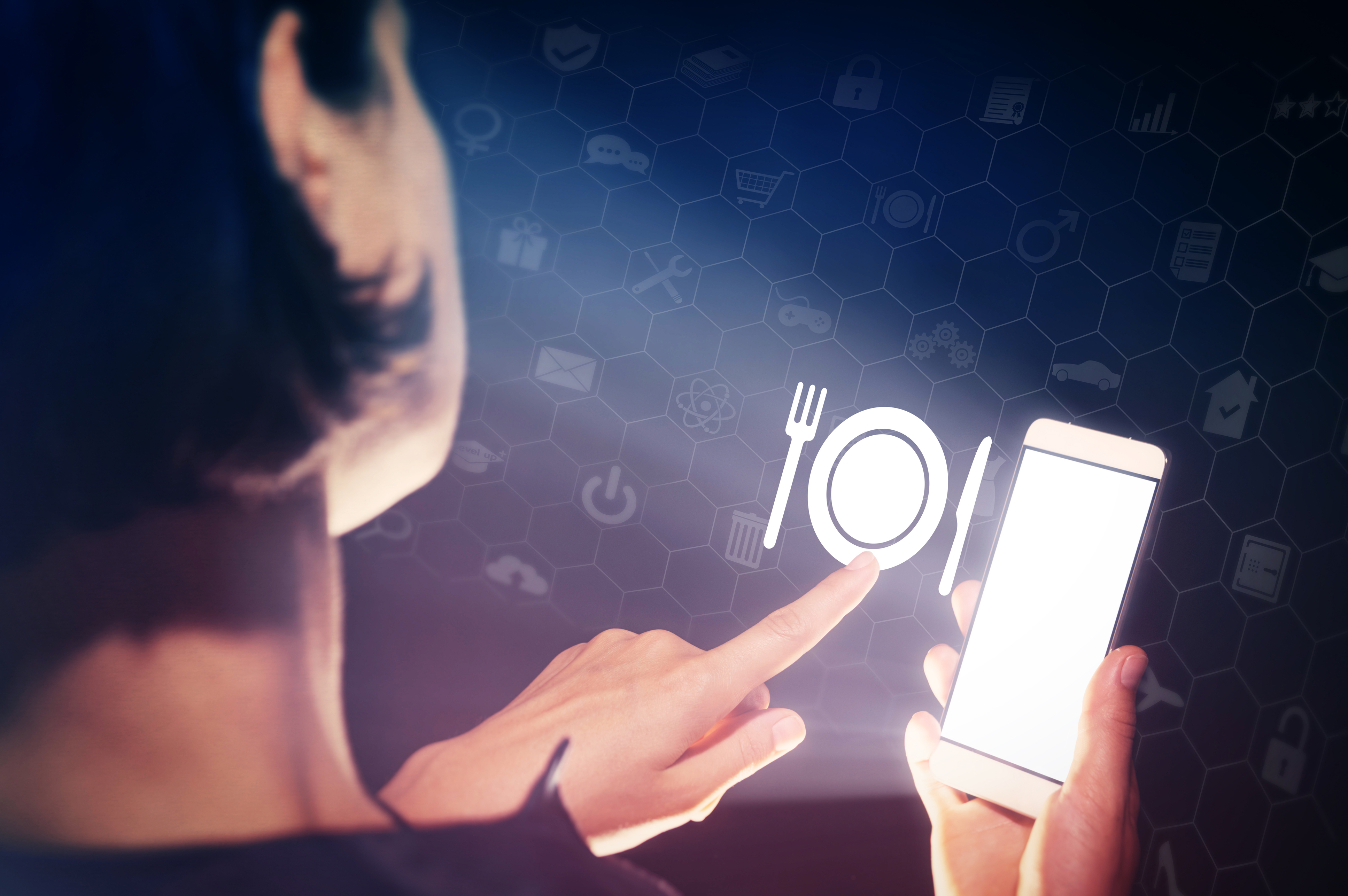February 26, 2020
 by Lenny DeFranco / February 26, 2020
by Lenny DeFranco / February 26, 2020

The restaurant industry is entering the new decade at a pivotal moment.
Right now, restaurants are doing better than ever. Over the past decade, spending on US restaurants has grown more than 4% a year, to an all-time high of $863 billion at the end of 2019. For the first time, Americans are spending more than half of their food budgets dining out.
At the same time, restaurants are still only beginning to embrace the technology that, in other aspects of our lives, has changed everything. Though customers have gotten used to searching for “restaurants near me” on search engines and ordering meals on third-party delivery sites, many restaurant operators are only now starting to really understand the power of these channels to help them meet customers where they are.
One area evolving rapidly is restaurant marketing: the practice of driving new business and building guest loyalty among dining customers. Not long ago, restaurant marketing was far less common and more exclusive. Newspaper restaurant critics were all-powerful, diner feedback was limited, and advertising meant local print ads and maybe some investment in public relations.
Today, the process of discovering a restaurant has transformed. Restaurants are surfaced algorithmically by search engines and social media. User-generated content on channels like Yelp and Instagram let word-of-mouth reviews spread further, faster, and more authentically than ever before. Going forward, personalization will become the new standard of hospitality diners expect when they sit down at the table.
In the 2020s, a sophisticated, data-driven approach to restaurant marketing will become as standard in the industry as having a website is today. Here’s what to look for as restaurant marketing evolves in the coming decade.
Much like digital marketing’s evolution over the last twenty years, restaurant marketing is about to become much more tied to and driven by personal data.
Restaurants are sitting on a gold mine of personal data. In other industries, marketers need to track users around the internet (a practice gradually being outlawed by privacy regulations) and sometimes transact with shady parties in order to learn anything of value about the people who buy their products and services.
Restaurant service is a rare chance to connect directly with customers and their friends, family, coworkers, and everyone else they dine with. The more hospitality a restaurant provides, the richer the exchange of data. Just by looking at a restaurant’s POS data, for example, you can understand who guests are, what kind of food and drink they like, who they hang out with, and countless other pieces of information.
All of this data is gladly offered by the guest in the hopes that the operator will use it to personalize service. According to Google consumer research, 49% of all customers want to receive promotions based on their past purchase history, and 40% spend more than planned when experiences are personalized. Using guest data to elevate service is an important way restaurants drive repeat business.
Restaurant marketing makes use of this guest data even after they leave. In fact, 91% of consumers are more likely to return to a business that recognizes them, remembers their name, and sends personalized relevant offers. By targeting their guests with a high level of personalization, restaurants can drive more repeat business and serve them better in-store, too.
Along with having direct access to personal data, restaurants are in the unique position of being able to hear what customers thought of their service. (Immediately and unavoidably, believe me.) Sites like Yelp, Tripadvisor, Facebook, and others are filled with consumer-generated restaurant reviews.
These reviews impact business. Diners, for one thing, are four times more likely to spend money on an experience referred by a peer. There’s also an algorithmic effect. Sites that recommend restaurants, like Google and Tripadvisor, take customer sentiment into account. A higher star rating on Google equals more diners finding you on Google Maps.
With online reviews more important than ever to a restaurant’s bottom line, it’s essential for operators to keep up with them. Luckily, technology that is set to emerge during the 2020s will help.
Sentiment analysis is an application of artificial intelligence that mines the emotional impact of a piece of writing (like a restaurant review). Natural language processing is technology that essentially allows a computer to engage with the actual content of written language. Though capabilities like these are in their infancy now, over the next decade they will develop enormously and start being built into restaurant management software.
With automated systems able to “read” and even summarize user reviews, staying on top of customer sentiment will be simple. Restaurant operators will be able to counteract negative feedback, and even uncover actionable insights for their operations, faster.
For a long time, hotels have been attempting to predict periods of demand for their hotel rooms so as to be able to adjust their marketing spend and room pricing accordingly. This predictive analysis is called “revenue management.” Traditionally, hotels have been the only businesses in hospitality doing revenue management. In the 2020s, restaurants will join in.
The goal of revenue management is to drive business as efficiently as possible. It’s great to serve full dining rooms every night, but it’s not ideal to pay more than necessary to get those guests in the door. Hotels are masters of anticipating when they’ll need to spend marketing dollars to make up for lower demand, and when they can turn those channels off – say, during a busy part of the tourist season.
As restaurants become increasingly fluent with data, they too will gain the ability to invest in marketing dynamically. Instead of relying on a paid channel for all their reservations, restaurants will prioritize direct reservations while connecting to third-party booking channels. This will drive down the cost of acquiring diners, help them prepare for slow periods, and still give them access to the marketing channels they leverage today.
As environmental concerns become more and more mainstream over the next ten years, sustainability will become central to businesses’ PR and branding efforts. Few industries will be more impacted than restaurants.
Dining is an industry built on elective spending. For any consumers who decide to spend their disposable income conscientiously, it’s easy to choose restaurants that make a point to promote sustainability. Other commitments to ecology, like using less fossil fuel or generating less waste, are much harder for consumers to adhere to. For that reason, restaurants should expect to be on the front lines of changing consumer values.
Sustainability is already a buzzy topic in the restaurant world. Right now, the focus is mostly on reducing food waste. Half of all consumers today say that a restaurant’s recycling and food waste efforts can influence where they choose to dine, according to the National Restaurant Association. Restaurant operators themselves are starting to promote their conservation efforts, with one in five donating leftover food to charities and half of all operators tracking the amount of food waste they generate.
Over the next decade, many restaurants will feel pressured to answer for their ecological impact for the first time. And just like with grocery products that are GMO-free or organic, you can expect the businesses that lead the way on sustainability to incorporate that fact prominently in their restaurant marketing.
Call it the Amazon Prime effect: when customers feel like they have a standing membership in a brand, they’re more likely to turn into repeat business. And with repeat visitors spending around 67% more than new guests, restaurants are doing everything they can to instill that sense of belonging and investment into their customers.
Ever since airlines introduced the first frequent flier programs over thirty years ago, businesses in all industries have launched their own versions of customer loyalty programs. But the selection is starting to get unmanageable: according to HubSpot, the average consumer participates in 14 loyalty programs today and engages with only 7. Still, points are getting easier to track, and as payments become ever more digital, easier than ever to calculate and accrue.
With loyalty programs getting easier to create and less convenient to actually use, something’s going to give in the next ten years. Our guess is that we’ll see the growth of a “points economy,” in which loyalty rewards are made transferrable with other rewards programs.
Today, many restaurants have independent loyalty programs, such as restaurant groups that issue gift certificates and chains that offer member apps. For customers to get any value out of those programs, they need to patronize those particular businesses. Compared with rewards programs that offer more diverse ways to spend – this being one of the primary dimensions in which credit cards are now competing – a loyalty program that limits a customer’s choices is less appealing.
But if restaurants join into networks the way airlines have formed alliances, customers will be able to transfer points at more locations, thus giving the points more value and increasing the repeat business generated by the programs. Throw in partnerships with rewards programs by hotels, credit cards, miles, what-have-you, and each network starts to look more like a fully-fledged marketplace. This will drive customer engagement with the loyalty programs, and in turn, guest loyalty.
At the outset of the 2020s, restaurant marketing itself is still an emerging concept. To many in the restaurant industry, the tactics that digital marketers and hotel groups have used for years are still new. Those who are using them, though, are seeing real results.
The key to ensuring that restaurant marketing continues to develop is for operators to use industry-specific tools for executing campaigns. Restaurants are not SaaS companies or retail stores; the marketing best practices that work for those businesses will not necessarily translate to more guest loyalty for restaurants.
Restaurants need to leverage the power of their guest data to create amazing experiences when guests are there, and with that data, help earn their business again and into the future.
Do more for your restaurant marketing strategy with the right restaurant software. See all available options for your needs on G2.
Lenny DeFranco writes about the data transformation of hospitality for SevenRooms. Contact with story ideas and life questions at lenny.defranco@sevenrooms.com.
If you represent a B2C business, you’d know how challenging it is to acquire new customers.
 by Forum Sheth
by Forum Sheth
Improving customer happiness is the key to success for any business, whether you’re selling...
 by Matt Shealy
by Matt Shealy
We can all agree on one thing: the marketing landscape is crowded.
 by Alexa Drake
by Alexa Drake
If you represent a B2C business, you’d know how challenging it is to acquire new customers.
 by Forum Sheth
by Forum Sheth
Improving customer happiness is the key to success for any business, whether you’re selling...
 by Matt Shealy
by Matt Shealy


